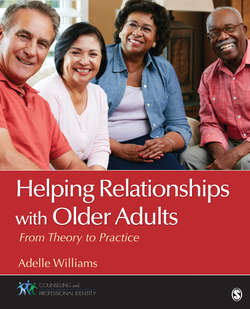Читать книгу Helping Relationships With Older Adults - Adelle M. Williams - Страница 19
На сайте Литреса книга снята с продажи.
Free Radical Theory of Aging
ОглавлениеThe free radical theory of aging explains the basic chemical process underlying aging. The reaction of active free radicals, normally produced in the organisms, with cellular constituents initiates the changes associated with aging (Herman, 2006). The free radical theory of aging suggests that free radicals, or unstable molecules, are produced when the body transforms food into chemical energy, creating damage that causes aging. This transformation occurs at the individual cell level. Free radicals also may be generated in the body due to cigarette smoke, drugs, and radiation (Dietrich & Horvath, 2010) and are a by-product of normal cells. Most changes associated with aging result from damage caused by free radicals (Bengtson et al., 2005). Free radicals disrupt the normal production of DNA and RNA and alter the lipids, or fats, in cell membranes. They also damage cells lining blood vessels and interfere with the production of prostaglandins, which are derived from essential fatty acids and regulate many physiological functions. Partly as a result of free radical damage, aging leads to alteration of proteins (cross-linking). The prematurely aged, wrinkled skin of smokers is caused by free radical-induced damage that smoking engenders, and cataracts have been linked to free-radical exposure (de Magalhaes, 2014). Free radicals have also been associated with dementia, cancer, and heart disease. Combating free radicals requires the consumption of antioxidants, which can be obtained through food.
This theory helps to explain why some individuals are at a greater risk of certain diseases than others, and it attempts to explain why aging occurs. Aging occurs when cells become permanently damaged from the life-long and unrelenting attack of charged molecular fragments, known as free radicals. The cellular damage inflicted by this uncontrolled oxidative stress inexorably spreads outward to the level of tissues and organs, where it eventually manifests itself as some form of degenerative disease. Over 80 degenerative diseases are now known to be linked to free radicals. Some of these diseases include heart disease, cancer, diabetes, arthritis, senile dementia, and Alzheimer’s disease. It is now believed that when people age, their ability to make sufficient amounts of antioxidants (substances that fight free radicals) declines, and then free radicals begin to accumulate and damage the cells. This is how the aging process ensues (MacWilliam, 2002).
